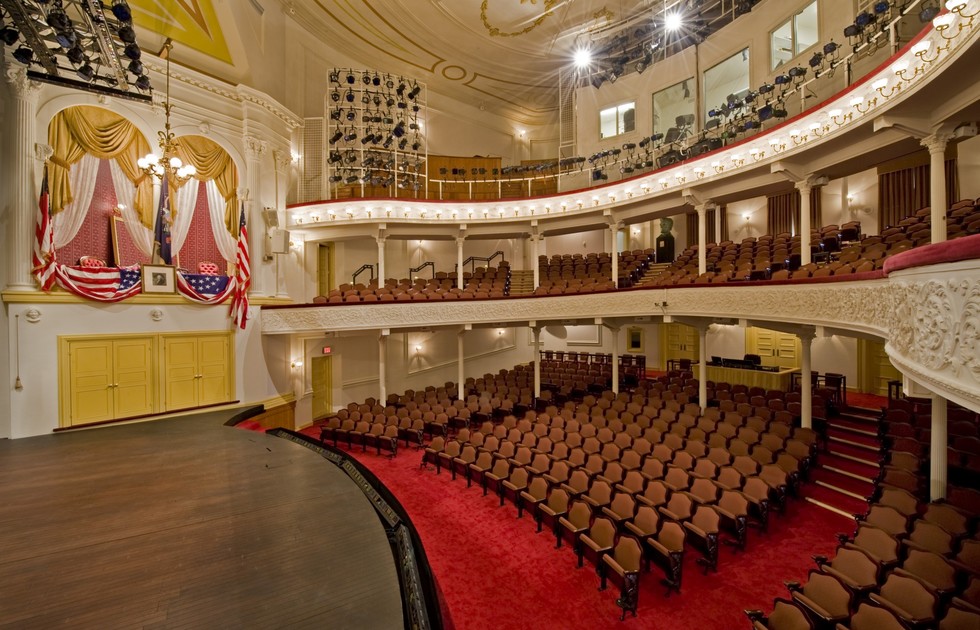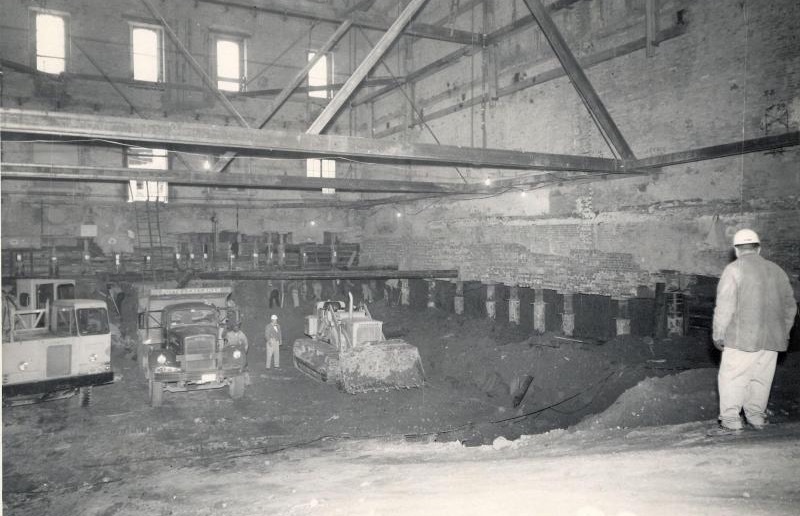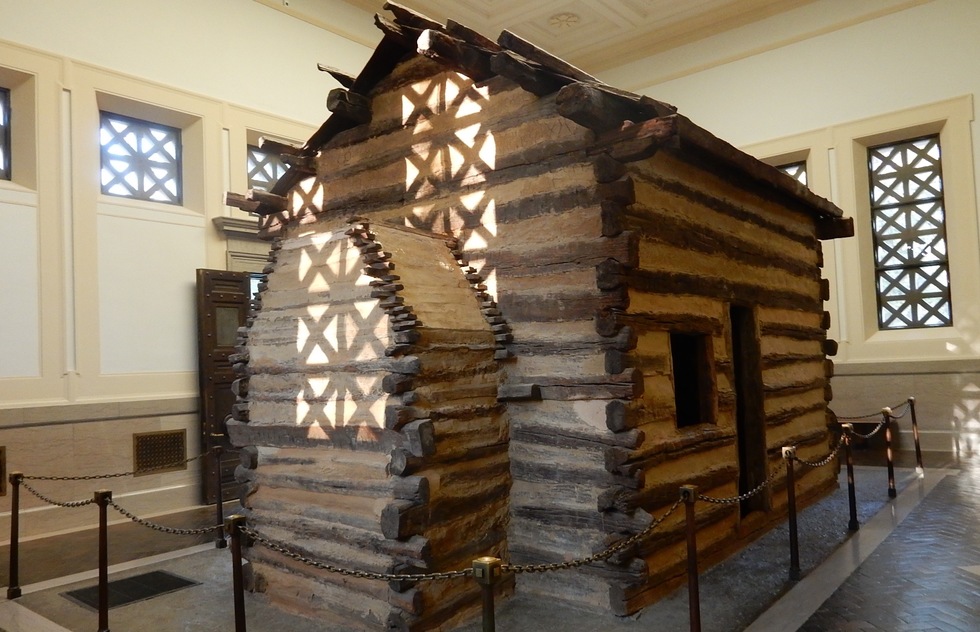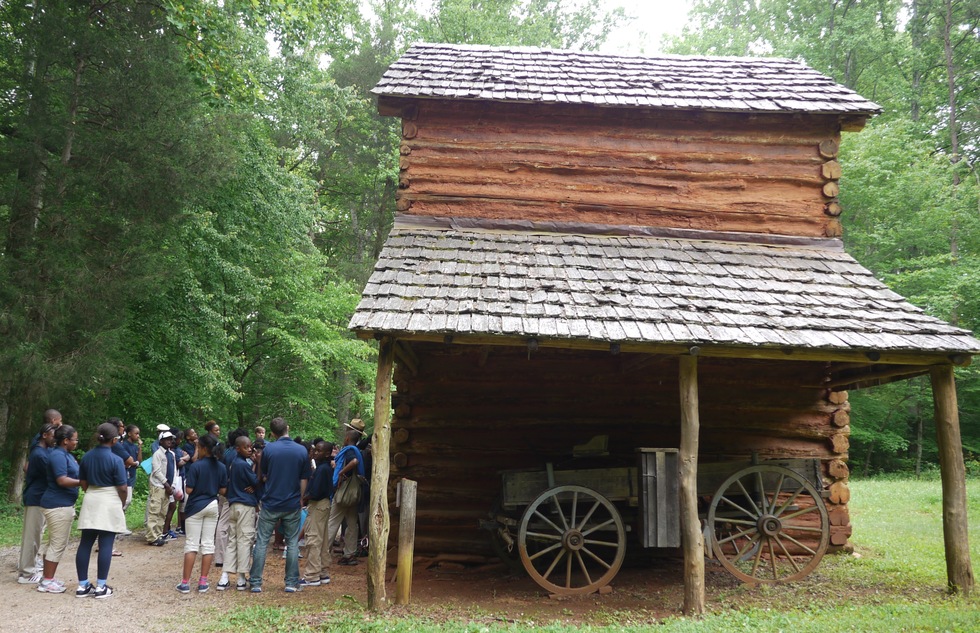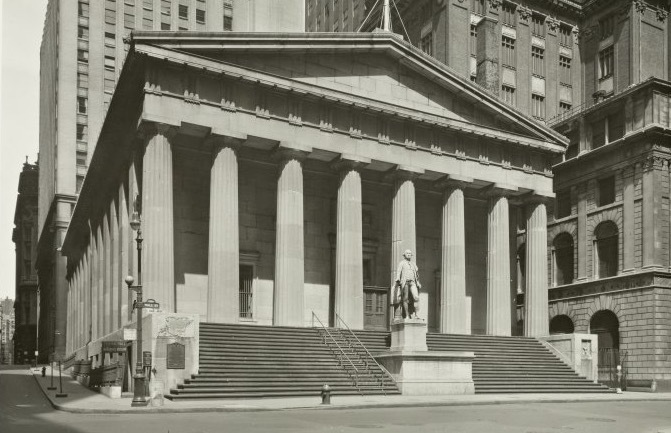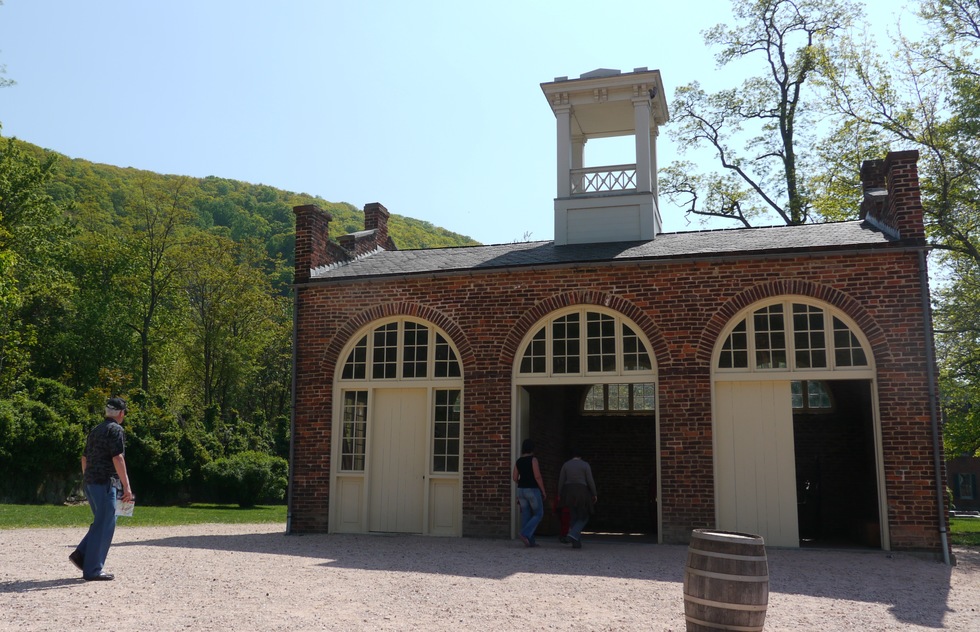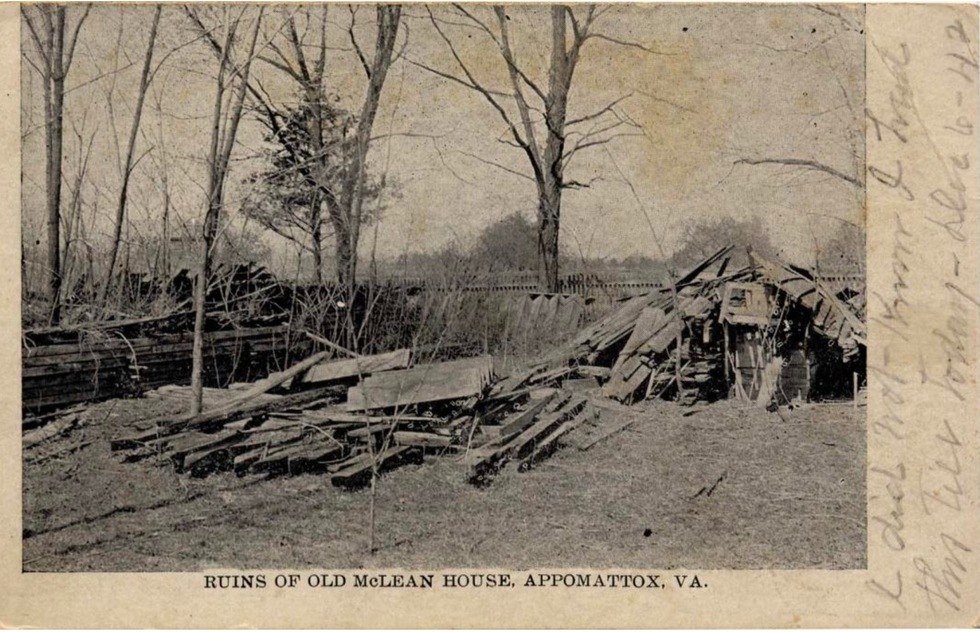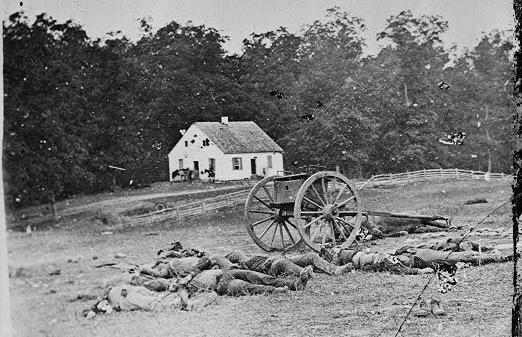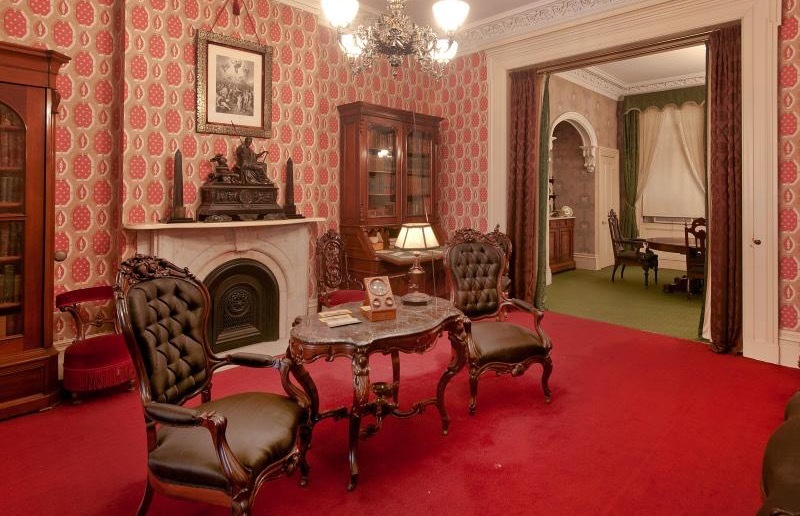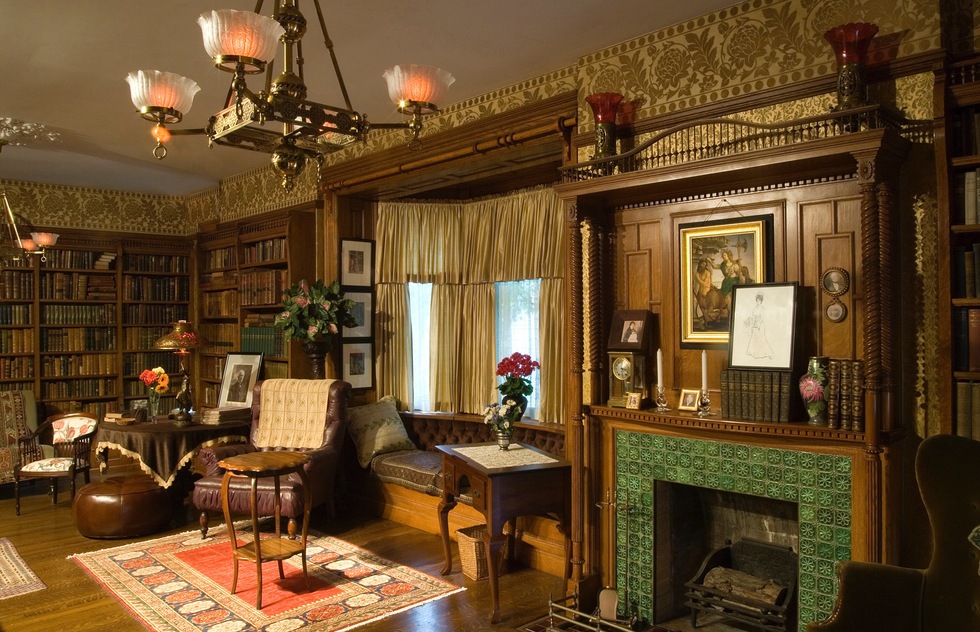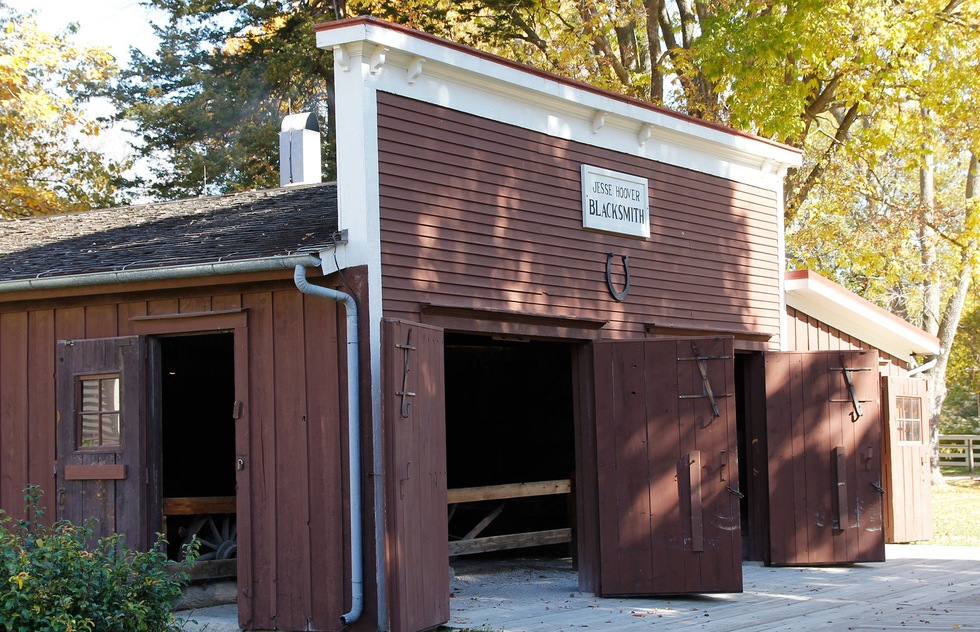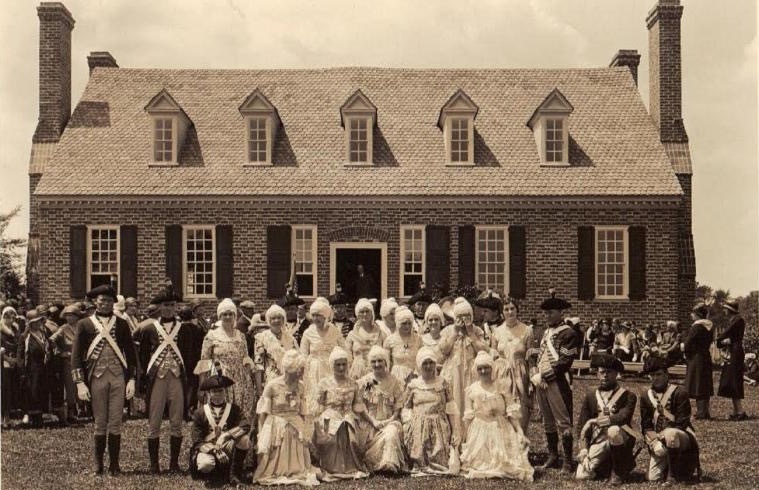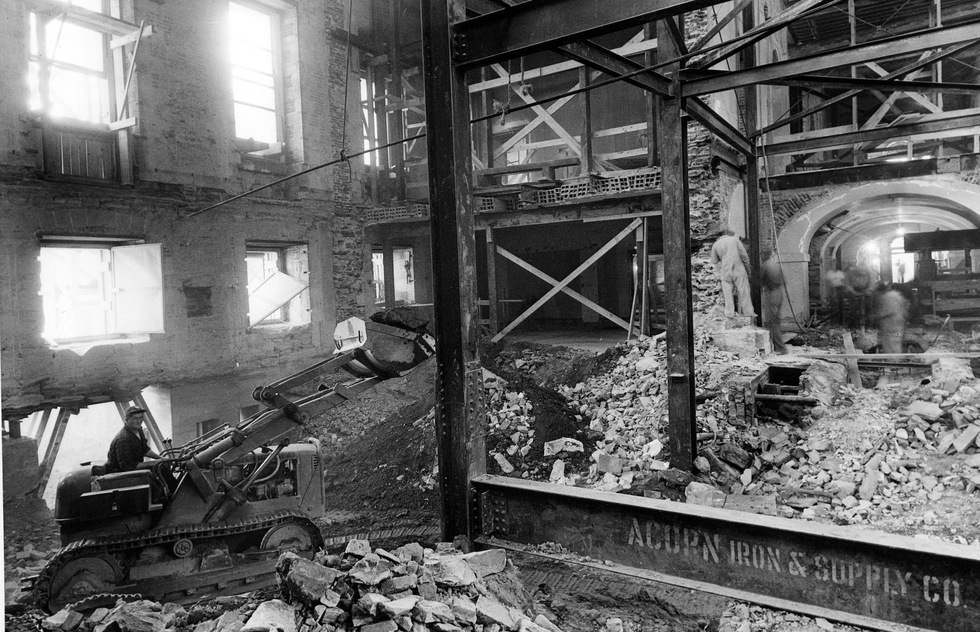American Historical Sites People Think Are Real—But Are Actually Fake
By Jason Cochran
You probably went to one of these on vacation or a field trip. You probably thought you were walking in the same rooms as the great figures in United States history. You were wrong. Some of the most important historical landmarks in the American story were lost, destroyed, changed, or forgotten before they could be preserved for tourism, and you may be shocked to learn that what you thought was real heritage was actually a mere facsimile of the original.
Photo: Ford's Theatre in Washington, D.C.
Photo: Ford's Theatre in Washington, D.C.
Ford's Theatre, Washington, D.C.
The playhouse where Abraham Lincoln was shot in 1865 couldn't remain in business after the embarrassment of assassination. The next year, the government purchased it for $88,000 and gave it to the War Department, which gutted it, installed floors, and turned the top floor into a medical museum (where John Wilkes Booth's spine once went on display) and a repository for Civil War records. It was a shoddy renovation job. In 1893, a column in the basement snapped and the interior of the building collapsed, killing 22 people—in a way, the last victims of the Civil War died where Lincoln was killed, too. The building was turned into a warehouse, and it took until 1968, during the Lyndon B. Johnson Administration, for the theatre to be fully reconstructed using Congressional funds. (The gut renovation is pictured above from the stage area.) To approximate what was lost, designers used crime scene photographs of the auditorium taken by famed Lincoln portraitist Matthew Brady.
Lincoln's birth cabin, Hodgenville, Kentucky
The starting point of Lincoln's life didn't fare too well, either. In 1909, Theodore Roosevelt helped lay the cornerstone of the temple-style Memorial Building that would contain this humble log cabin, and he told the crowd, "Just as the whole world’s faithful have sanctified the birthplace of Christ by housing it within an impressive Church of the Nativity, so the American people have ennobled the birthplace of Lincoln by housing it within a marble Temple of Fame." But the log cabin wasn't Lincoln's birthplace. That was lost even before he died. This one was a fabrication—maybe using a few pieces of the original's recycled wood, but no one's positive—built by entrepreneur Alfred Dennett to cash in on Lincoln's posthumous superstar status.
Ever the promoter, Dennett would even lease the cabin to showmen in other cities. On the road, the pieces got mixed up with pieces from another purported boyhood cabin—of Lincoln's archenemy, president of the Confederacy Jefferson Davis. (That cabin was also a fake.) The National Park Service publicly swore that the Lincoln birthplace cabin was the genuine article until 1948, when a whistleblower cornered the agency into coming clean. Today, the NPS, a little wiser, hedges by calling this sanctified tourist trick (stationed at the Abraham Lincoln Birthplace National Historical Park), the "symbolic" cabin. That didn't stop this fraud from being engraved on the back of the penny in 2009.
Ever the promoter, Dennett would even lease the cabin to showmen in other cities. On the road, the pieces got mixed up with pieces from another purported boyhood cabin—of Lincoln's archenemy, president of the Confederacy Jefferson Davis. (That cabin was also a fake.) The National Park Service publicly swore that the Lincoln birthplace cabin was the genuine article until 1948, when a whistleblower cornered the agency into coming clean. Today, the NPS, a little wiser, hedges by calling this sanctified tourist trick (stationed at the Abraham Lincoln Birthplace National Historical Park), the "symbolic" cabin. That didn't stop this fraud from being engraved on the back of the penny in 2009.
Booker T. Washington birthplace, Hardy, Virginia
The log cabin story dies hard in American culture, but the cabins themselves vanish early. Washington, who came up from slavery, wrote, "I was born in a typical log cabin, about fourteen by sixteen feet square. In this cabin I lived with my mother and a brother and sister till after the Civil War, when we were all declared free.” Washington returned to the former Burroughs plantation in 1908 in a much-publicized visit, when many of the buildings were still standing and could have been preserved. That day, as he visited the Burroughs family graveyard, he warned, “Preserve the old, kindly relations. If they are lost, they can never be replaced.”
Despite his efforts, the “big house” owned by the Burroughs family, where Washington learned he was free, was “mysteriously burned,” says park signage, in 1950. Now its land is the Booker T. Washington National Monument. The cabin of his 1856 birth is also gone, like most slave quarters from that era. Instead, there’s a convincing replica, built in 1960, plus a reproduction smokehouse from 1974. Today, the re-creations are home to a few horses and sheep and are often staffed with costumed interpreters to help modern visitors grasp what plantation life was like back then.
Despite his efforts, the “big house” owned by the Burroughs family, where Washington learned he was free, was “mysteriously burned,” says park signage, in 1950. Now its land is the Booker T. Washington National Monument. The cabin of his 1856 birth is also gone, like most slave quarters from that era. Instead, there’s a convincing replica, built in 1960, plus a reproduction smokehouse from 1974. Today, the re-creations are home to a few horses and sheep and are often staffed with costumed interpreters to help modern visitors grasp what plantation life was like back then.
Federal Hall, New York City
Federal Hall was where America's foundations were laid. Here, at the top of Wall Street, was where the first U.S. Congress sat, where the Bill of Rights was enacted, where the Zenger trial established freedom of the press, where the Northwest Ordinance was adopted, and where, in 1789, George Washington was inaugurated as the first U.S. president. Yet in 1812, the city of New York decided that priceless building, built around 1700 in the English Georgian style, should be torn down. It was sold for $400 in scrap.
The current building was actually built in 1842 to mimic the Parthenon in Athens, and it was used as a customs house and then as a storehouse for gold and silver. There are bank vaults in the basement and the floor is warped from all the bags of money that were dragged across it—take that as a metaphor if you like. There are three original things inside, though: the Bible upon which Washington swore his oath and two pieces of the balcony where he stood while swearing it. The site is pretty much only a national park unit now because it has outlived its usefulness as a government building.
The current building was actually built in 1842 to mimic the Parthenon in Athens, and it was used as a customs house and then as a storehouse for gold and silver. There are bank vaults in the basement and the floor is warped from all the bags of money that were dragged across it—take that as a metaphor if you like. There are three original things inside, though: the Bible upon which Washington swore his oath and two pieces of the balcony where he stood while swearing it. The site is pretty much only a national park unit now because it has outlived its usefulness as a government building.
John Brown's Fort, Harpers Ferry, West Virginia
John Brown wanted to spark a slave uprising by seizing the weapons kept in Harper's Ferry, then in Virginia. Instead, he and his men faced their last stand in a brick fire engine hut, where some were bayonetted against the walls and Brown himself was captured so that Virginia could make an example of him. He was hanged before he knew it, but in fact, Brown and his followers probably helped ignite the Civil War. In 1891, the original shed was sold, dismantled, and shipped to Chicago for the World’s Columbian Exposition. Once the structure's usefulness as a tourist attraction was exhausted, the pieces were abandoned in a vacant lot.
Benefactors saved what they could, returning what remained to the South and re-assembling it on a spot 3 miles outside of town before relocating the whole thing to a nearby college campus. Only in 1968, around the time Ford’s Theatre was being reinvented, did the shack, now known as John Brown’s Fort, wind up back in Harpers Ferry proper—which also shed its apostrophe after the war—but not in the right spot, since its rightful home is 150 feet away, under what’s now a railway embankment.
Benefactors saved what they could, returning what remained to the South and re-assembling it on a spot 3 miles outside of town before relocating the whole thing to a nearby college campus. Only in 1968, around the time Ford’s Theatre was being reinvented, did the shack, now known as John Brown’s Fort, wind up back in Harpers Ferry proper—which also shed its apostrophe after the war—but not in the right spot, since its rightful home is 150 feet away, under what’s now a railway embankment.
McLean House, Appomattox, Virginia
Everyone knew how important it was. This was the house where Robert E. Lee surrendered to U.S. Grant, ending the Civil War in April 1865. In 1891, one Myron Dunlap of Niagara Falls, New York, bought the building and took it apart. Just like John Brown's Fort, it was intended for display at the World’s Columbian Exhibition in 1893; then the plan was to move the house to Washington as a feature of a national Civil War museum. But the Panic of 1893 scuppered that idea, and for 46 years, the house lay in pieces in its own yard, where it was scavenged or rotted into nothing (pictured above).
In 1938, Ronald F. Lee fought against its reconstruction in his role as Chief Historian of the National Park Service—he favored preservation over imitation. But local pressure won out; he later called it the "second surrender of Lee at Appomattox." The new McLean House, which pretends to be the old McLean House, went up in 1948, 100 years after its predecessor. You have to ask a ranger to get the whole truth: The only elements that were actually present during the surrender are a horsehair couch and a few vases on the mantel. (The courthouse of Appomattox Court House National Historical Park is a fake, too, from 1964.)
In 1938, Ronald F. Lee fought against its reconstruction in his role as Chief Historian of the National Park Service—he favored preservation over imitation. But local pressure won out; he later called it the "second surrender of Lee at Appomattox." The new McLean House, which pretends to be the old McLean House, went up in 1948, 100 years after its predecessor. You have to ask a ranger to get the whole truth: The only elements that were actually present during the surrender are a horsehair couch and a few vases on the mantel. (The courthouse of Appomattox Court House National Historical Park is a fake, too, from 1964.)
Dunker Church, Antietam, Maryland
It was featured in the background of one of the Civil War's most poignant images (pictured), taken by Scottish photographer Alexander Gardner, and its mention appeared in nearly every battlefield report from both sides. The church, much bombarded, managed to survive the 1862 cataclysm, which killed about 23,000 men over a single day, and was put back into worship service. But it was so famous that souvenir hunters came to carve off pieces of it, and when the congregation moved to a new sanctuary up the road, the Dunker Church, now empty, was pilfered to the edge of ruin. A 1921 storm finished the job.
A new owner sold the remnants for scrap and built his house on its foundations. That was removed in 1951, right before the land was donated to the National Park Service. The NPS rebuilt the church, now part of Antietam National Battlefield, in 1962, 100 years after the fight, with the few original materials curators could track down. Though it's a pretty copy, the building is merely an actor on this stage.
A new owner sold the remnants for scrap and built his house on its foundations. That was removed in 1951, right before the land was donated to the National Park Service. The NPS rebuilt the church, now part of Antietam National Battlefield, in 1962, 100 years after the fight, with the few original materials curators could track down. Though it's a pretty copy, the building is merely an actor on this stage.
Theodore Roosevelt's birthplace, New York City
On the guided tour, you'll be told that here is the room where T.R. concocted the vision for the American Museum of Natural History, and it was in that nursery window where he used to stand on steps to peer outside. None of it is true. Teddy never set foot in this building. He did live in a brownstone on this plot in the Flatiron District, but it was converted into stores in 1896 and demolished outright in 1916. When Teddy died in 1919, his family realized what a mistake had been made, so they bought the site and the brownstone next door, which had belonged to the president's uncle, rebuilt a replica of the lost home, and in 1923 opened them as a private tourist attraction. It wasn't picked up as a National Park unit until 1962. About 70% of the furnishings belonged to the extended Roosevelt family, but not necessarily to Teddy's parents. It's all an approximation "in the style of" an 1865 Manhattan home and a symbolic tribute to the old Trust Buster.
Theodore Roosevelt inaugural site, Buffalo, New York
Likewise, the room in which Theodore Roosevelt became the youngest man (at age 42) ever to be inaugurated as president in 1901 is pretty much a stage set. After William McKinley was shot in the Temple of Music at a world's fair in Buffalo, Teddy rushed to the city, only to find his boss had expired. In the library of a private home, he was sworn in. But like the owner of Ford's Theatre after Lincoln's assassination, the people who ran Buffalo were embarrassed that a president had been killed on their turf, and the home was not preserved. In fact, the furniture was sold and the place was converted into a restaurant known for turkey, with the fateful spot serving as one of the dining rooms. It has been restored using images, and the chandeliers and center table are original, but the rest is a skilled pastiche. Tourists stream through daily when they visit the Theodore Roosevelt Inaugural National Historic Site.
Herbert Hoover's blacksmith shop, West Branch, Iowa
Herbert's dad Jesse ran a blacksmith shop from 1871 to 1878, and the young president-to-be grew up around the business until his father's premature death at age 34. But this is not that shop. That shop is gone. This one was built in 1957 at the behest of the Hoover family, who perhaps wanted to improve Hoover's reputation as a lousy leader. Although the National Park Service calls it "reconstructed," it's not a copy of the original, either. No images or plans survive, and the builders had to work from fuzzy memories supplied by Herbert's elderly older brother (already dead by then). The shop wasn't even constructed in the right spot, so rangers now subtly say it's representative of the genre. Pay no attention to the sign that says it was Jesse Hoover's shop. It wasn't.
George Washington Birthplace National Monument, Virginia
Here's another childhood building that many tourists assume is authentic when it's actually merely symbolic of the era. Washington only lived in the area, near the banks of the Rappahannock River in northeast Virginia, from his birth in 1732 to 1735, and after that house burned down in 1779, its exact location was forgotten. This house was opened in 1931, in time for his 200th birthday. That's a photo of proud members of the memorial assoication that funded it, but no images survive of the actual original home, so they merely made a typical house, and not one much like anything Washington would have actually remembered. The National Park Service even calls it the “Memorial House” to imply a distinction, but plenty of visitors are still confused. The foundation of the actual house was later discovered nearby.
The White House, Washington, D.C.
Yes, even the White House in Washington, D.C. is not an original. By the mid-20th century, this rickety, much-altered building, which barely held together after being burned by the British in 1814, was in pitiful condition. In places, the plaster sagged by a foot and a half, the chandeliers literally swayed, and in 1946, a leg of First Daughter Margaret Truman's piano sank through the floor. Fire inspectors also declared the old wooden mansion a fire trap. So from 1948 to 1952, under the supervision of Harry S Truman, the building was gutted. The paint and floors that had witnessed 150 years of history were removed. For a while, the most historic section of the White House was just an 80-foot-tall cavern behind a shell of a facade. Steel beams were installed, as was reinforced concrete and a new sub-basement suitable for shelter during a nuclear attack. As much as possible, things like mirrors and doors were reinstalled over the new steel superstructure, but for many wooden features like wainscoting and molding, damage caused by time and removal meant that wasn't possible. Only the State Dining Room contains much of its pre-renovation wood, and that only dates to 1902. And the Lincoln Bedroom? Abe never slept in it.
Frommers.com Editor-in-Chief Jason Cochran explores more American cultural sites with dubious histories in his book Here Lies America.
Frommers.com Editor-in-Chief Jason Cochran explores more American cultural sites with dubious histories in his book Here Lies America.





